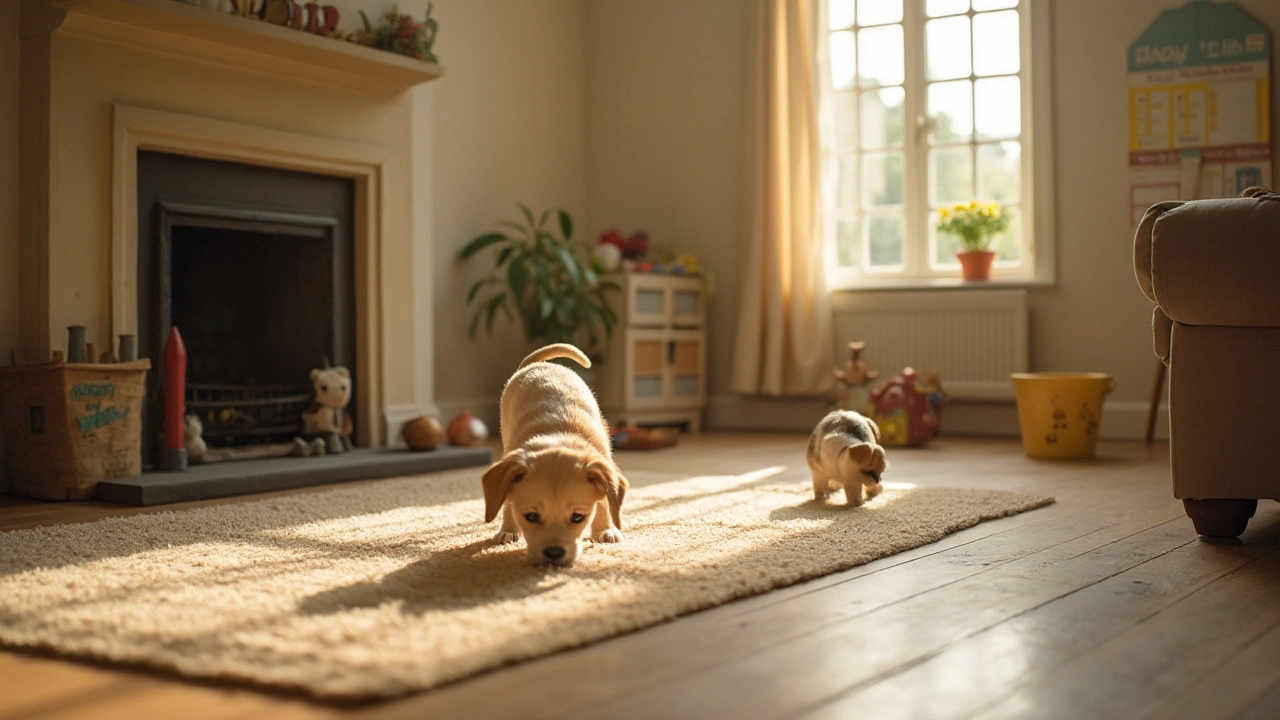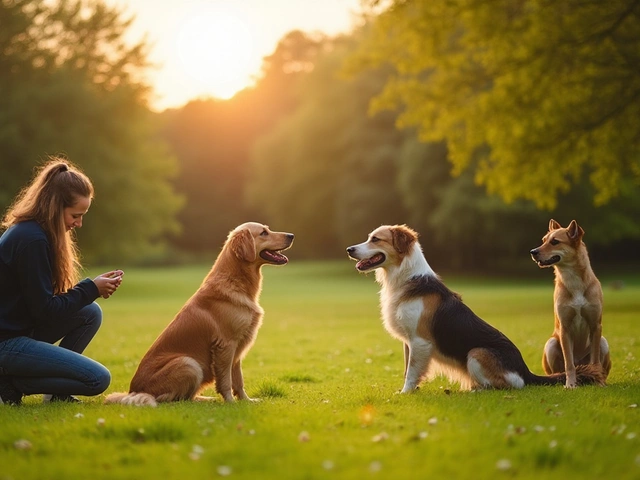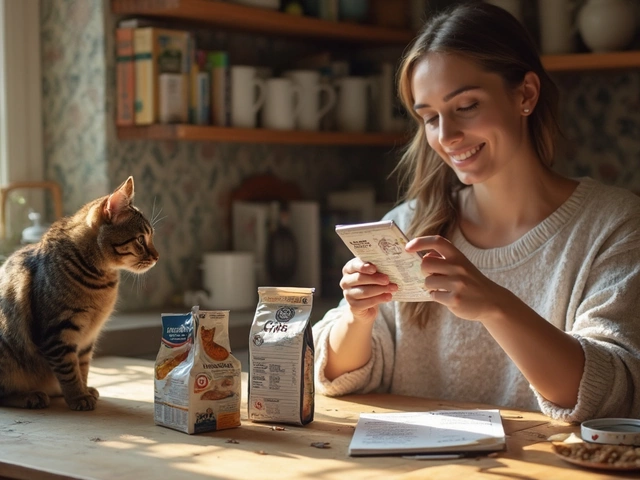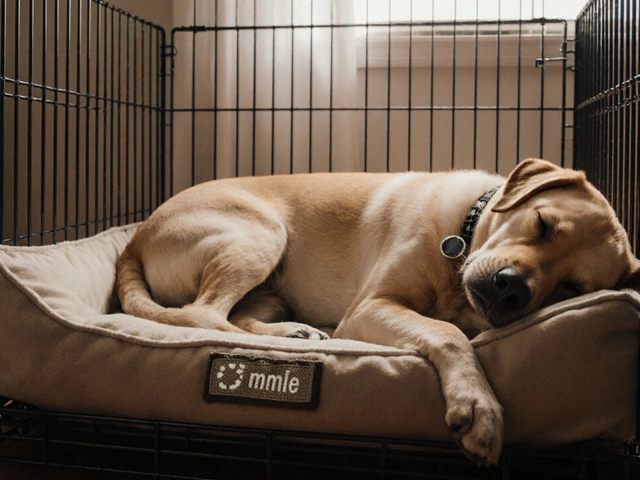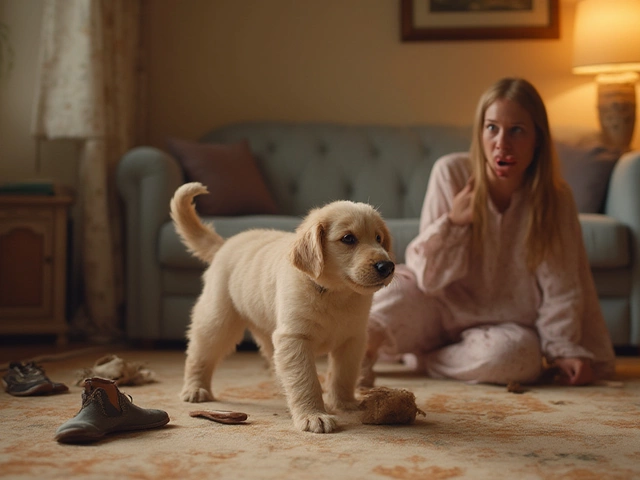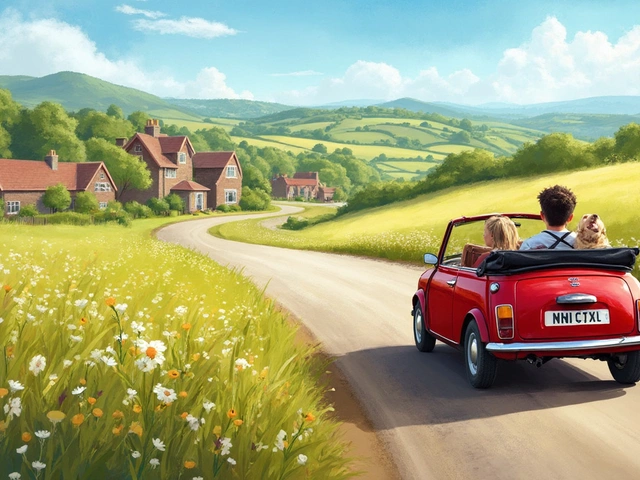Living with a brand-new puppy is a joyous experience filled with giggles and, sometimes, exasperation. These furry little creatures, though tiny, have an incredible zest for life that often feels endless. Many first-time puppy owners find themselves asking a relatable question: 'When will my puppy calm down?' Understanding the developmental stages of puppies and what fuels their unquenchable energy can bring some clarity and peace of mind.
Join us as we explore the journey of a pup’s life, unraveling what factors affect their lively nature and at what age you might expect to see a more relaxed demeanor. This guide isn't just about waiting it out, but also offers practical tips and insights on how to help your playful pup transition smoothly to calmer days, with a little help from some well-chosen toys.
- Understanding Puppy Behavior
- When Do Puppies Typically Calm Down?
- Factors Influencing Puppy Energy Levels
- Toys and Tools to Soothe Your Pup
- Tips for Encouraging a Calmer Puppy
Understanding Puppy Behavior
The delightful chaos that puppies bring into our lives is both endearing and bewildering. Understanding puppy behavior starts with recognizing that these furry bundles of joy are naturally curious explorers. With boundless energy at their disposal, puppies will dash from one side of your living room to the other, often getting into mischief. It's no wonder many pet owners find themselves bewildered by their pup's antics, as their curiosity knows no bounds. Puppies learn from every nudge, chew, and bark, using their playful nature to interpret the world. This intense exploration often peaks when they are just a few months old, leading many to question their high energy and how it fits into normal development.
During this developmental period, socialization lays the groundwork for a well-rounded, confident canine. Exposure to various people, sights, and sounds is crucial as it helps puppies learn how to interact with the world around them. As they grow, you'll discover their behavior reflects not just their breed tendencies but their individual personalities. For instance, a Labrador Retriever might display endless enthusiasm, feeling ecstatic at the sight of a toy or a stranger. This thirst for exploration and learning can sometimes seem overwhelming for new dog parents. Canine experts suggest that patience and understanding are vital during this stage.
According to Dr. Ian Dunbar, a noted veterinarian and founder of the Association of Professional Dog Trainers, "A puppy’s socialization period is essential and should be nurtured carefully. Providing diverse experiences in these early months is crucial to raising a balanced dog."Recognizing these energetic behaviors can prevent misunderstandings and set the foundation for more serene days later on. A puppy’s energy levels naturally align with their growing bodies and active minds, and taking them into account can make managing and guiding their behavior a positive experience for both of you.
Delving deeper, it becomes essential to distinguish between normal playful behavior and signs of underlying issues. Occasionally, what might appear as excessive energy or restlessness could be a signal for more attention, anxiety, or even an underlying medical issue. Certain dog breeds are naturally more active and require much more mental and physical stimulation, while others may adopt a calm demeanor more swiftly. Observing and, importantly, understanding these nuances, can pave the way for a harmonious cohabitation with your furry friend. To better manage their exuberance, providing enriching tasks like training sessions and interactive playtimes can help puppies expend energy appropriately.
Beyond toys, equipment like sturdy chew items and challenging puzzle feeders can serve as mental workouts, satisfying the intellectual needs of growing pups. These tools help channel their curiosity productively, reducing the likelihood of developing problematic habits. By meeting their instinctual needs constructively, pet owners can guide their puppies towards behavior that’s not only calmer but also more rewarding for everyone involved. Remember, puppies are not merely smaller versions of adult dogs; they are developing beings who require as much learning as any small child, needing nurturing guidance to grow into confident adult dogs. Embrace the journey of understanding puppy behavior, and you’ll unlock a deeper bond with your little furry family member.
When Do Puppies Typically Calm Down?
The journey of a puppy growing into a calmer dog is as intriguing as it is unpredictable. Most puppies start to gradually calm down between six months to a year of age. This period is pivotal as they transition from hyperactive tots to more composed adolescents. Yet, it's crucial to understand that every puppy is unique, thanks to their breed, environment, and individual temperament. While some pups may seem uncontainable, others may surprise you with their mellow nature early on. For instance, herding breeds or working dogs might retain higher energy levels for extended periods, as they are bred for stamina and alertness.
If you have ever marveled at how your neighbor’s labrador seems to settle down without much fuss, while your terrier remains a rocket of activity, it's a reflection of these natural tendencies and influences. This segment of your pup’s life is not just a countdown to calmness but an unfolding journey. The timeline can also be swayed by an array of factors, including how much physical and mental stimulation they receive, as well as their social interactions. Puppies, much like children, are incredibly observant and learn behaviors from their human counterparts and other animals around them. Patience and proactive strategies during this developmental phase can make all the difference.
In fact, a study published by the American Kennel Club emphasizes, "Puppies thrive on regular routines, positive reinforcement, and environments that stimulate their curious nature." Developing a nurturing and structured setting can aid in their transition to calmer companions. It's vital to engage them with activities that siphon their energy constructively, while avoiding overstimulation that could lead to contrary effects. You might find that deploying a repertoire of creative games and exercises not only bonds you with your pup but also helps in tapering their energetic peaks to more manageable levels.
As your furry friend inches closer to their second birthday, you'll likely notice a significant shift in their ability to remain composed. Dogs typically reach full maturity between ages one and two, depending on their breed size, with smaller breeds maturing faster than larger ones. This natural progression is akin to a blossoming relationship where all the initial sparks settle into a warm, enduring glow. For many pet owners witnessing this change marks a newfound stage of harmony and companionship. Hence, monitoring and celebrating these small yet significant milestones is equally rewarding. Embrace this learning curve wholeheartedly to reap the joys of a well-adjusted, serene dog.
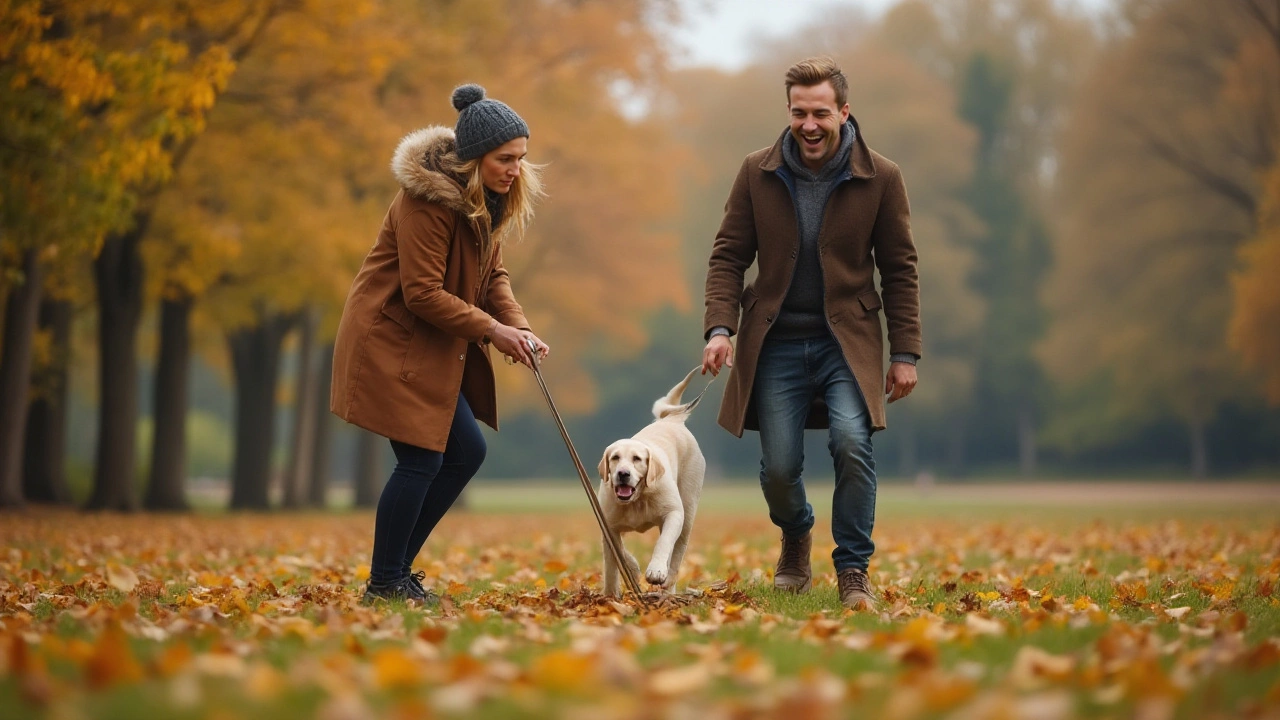
Factors Influencing Puppy Energy Levels
Puppy development is a fascinating yet exhausting phase of pet ownership that often leaves new owners in awe of their little furball's seemingly endless enthusiasm. Understanding puppy behavior and what drives their boundless energy can provide clarity and aid in managing their exuberance. Various factors influence puppy energy levels, ranging from genetic background, age, breed type, socialization, diet, and overall health. Puppies, especially those from high-energy breeds like Border Collies or Huskies, tend to have inherently higher activity thresholds compared to their low-energy counterparts like Basset Hounds or Bulldogs. This doesn't mean that individual pups won't vary significantly, even within a breed, but it gives a benchmark for what might be expected.
Age, of course, plays a crucial role. Young puppies, especially those under six months, are often in the 'discovery phase,' a time that naturally lends itself to bursts of energy and curiosity. They're like tiny adventurers eager to explore their environment, play, chew, and interact. As they mature, particularly after reaching one year, you'll likely notice a gradual decline in these frenetic bursts, settling into a more predictable daily rhythm. Yet, until they reach these calmer waters, appropriately channeling this energy is key to a harmonious household.
Socialization also exerts significant impact on a pup's energy levels. Regular interaction with other dogs, people, and diverse environments helps puppies learn proper play behaviors and burn off excess energy constructively. Without such outlets, they might express their energy through less desirable behaviors like excessive barking or destructive chewing. Offering them plenty of experiences and exercise opportunities is vital. Moreover, the right diet is fundamental. Low-quality dog food lacking in essential nutrients can lead to erratic behavior. Ensuring their diet is rich in proteins and balanced can significantly impact their energy and behavior.
Dr. Sarah Jones, a renowned veterinarian, comments, 'A balanced diet improves not just your pet's health, but also their behavior. Poor nutrition can certainly fuel hyperactive tendencies.'Another critical factor involves health. Infections or underlying health issues can sometimes manifest as heightened energy or irritability. Regular vet check-ups ensure that puppies are not suffering from conditions that add an unnecessary energy spike. Finally, daily routines and the environment also contribute. A well-crafted daily schedule that incorporates feeding, exercise, training, and rest can mold puppy energy into manageable phases, where they know when to expect activity and would anticipate rest.
For an insightful grab at understanding how various breeds differ in their energy demands, consider the table below:
| Breed | Energy Level |
|---|---|
| Border Collie | High |
| Basset Hound | Low |
| Golden Retriever | Medium |
| Siberian Husky | High |
In summary, while puppies can often surprise you with unexpected spurts of activity, understanding the underlying factors affecting their energy can help owners guide their puppies into adulthood with confidence and joy. A combination of age, breed, socialization, diet, and health intricately weaves together the unique canvas of your puppy's energy profile, where every brushstroke has its significance in creating the masterpiece that is their maturity.
Toys and Tools to Soothe Your Pup
Every puppy, with their infectious enthusiasm and boundless energy, can benefit greatly from puppy toys designed to soothe and engage. These toys are not just about providing entertainment but play a vital role in mental and emotional development. The right tools help in refining your pup's social skills, reducing anxiety, and channeling that seemingly endless zest for life into more constructive play. When selecting toys, it's imperative to understand the unique needs of your energetic little furball and how different toys cater to those needs. Durable chew toys, for instance, are indispensable for teething pups who are exploring their world through their mouth. Toys like KONG or Nylabone are specifically designed to withstand sharp puppy teeth and offer hours of chewing fun without destructibility worries.
Interactive toys that dispense treats, such as the ever-popular Bob-A-Lot, are excellent choices for puppies that require mental stimulation. These toys engage a puppy's natural curiosity and intelligence, compelling them to think and problem-solve in exchange for a delicious reward. It's a fantastic way to keep your pup entertained while building essential cognitive skills. These toys also encourage independence, which is crucial for those moments when you aren't available to provide direct interaction. As your pup learns to navigate these puzzles, they're learning patience and determination in the face of a challenge.
While toys are excellent for solo play, don't underestimate the importance of those that encourage bonding time between you and your pup. Tug toys and fetch tools are indispensable in fostering a healthy relationship. Tug-of-war significantly aids in teaching impulse control, especially when paired with basic obedience commands. Meanwhile, a simple game of fetch not only provides physical exercise but also strengthens the bond of trust and communication between you and your puppy. These activities help channel a puppy's behavior towards more social interaction, making them more responsive to training in the long run.
According to Dr. Emily Cross, an esteemed animal behaviorist, "Toys play a significant role in a puppy's life, much like books and games do in a child's. They're more than mere amusement; they're essential for a healthy mind and a happy, well-adjusted canine."
For owners seeking a more technology-driven solution, there are toys that incorporate modern tech for interactive play. These gadgets, like the Petcube or Furbo, allow owners to remotely engage with their pups through treat dispensing and even playtime via smartphone. Such innovations are perfect for pups who experience separation anxiety, providing comfort and a sense of connection even in your absence. Selecting the right toy for your puppy doesn’t need to be a daunting task if approached with curiosity and understanding.
Interactive play, combined with the appropriate tools, sets the stage for a calm and happy puppy development. Through trial and error, you’ll discover which toys capture your pup's attention and which ones support their development best. Always prioritize safety, and make sure any toy you select is the right size and resilience for your particular pup. In time, these toys will be more than just distractions; they’ll become a cherished part of your pup’s growing-up story.
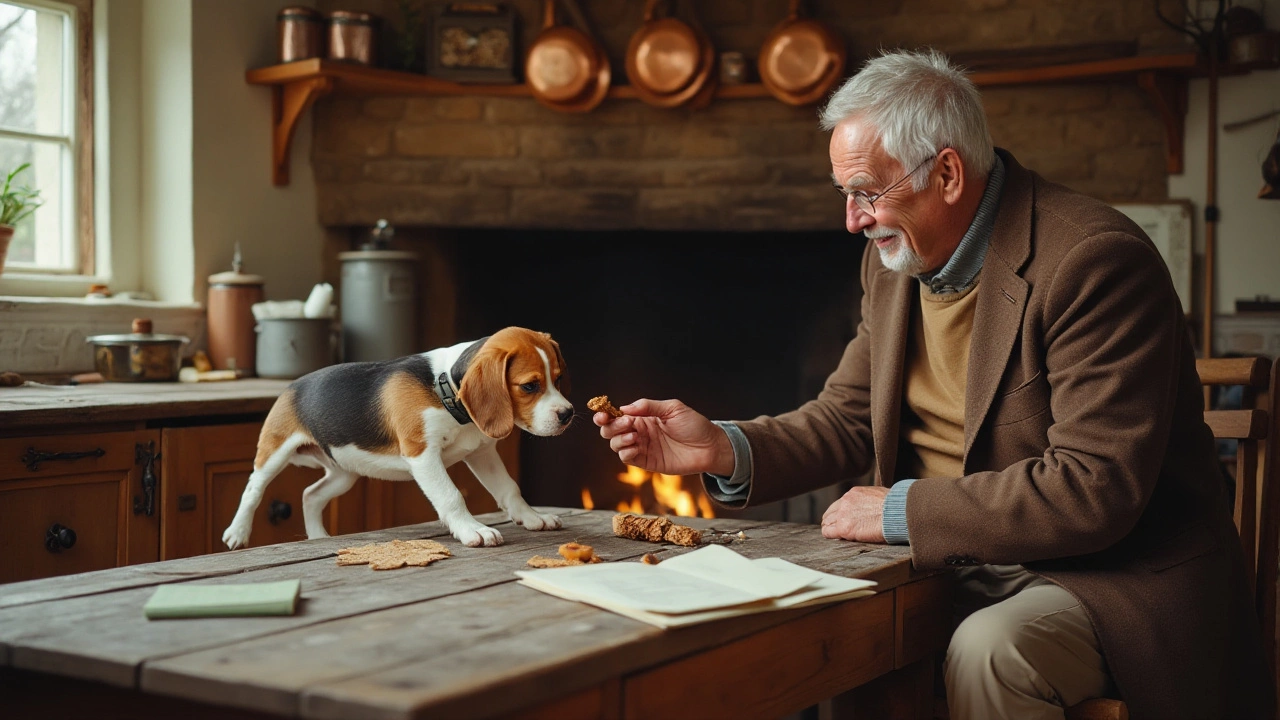
Tips for Encouraging a Calmer Puppy
Calming a lively puppy is part art, part science, and a whole lot of love. If you've ever watched your pup sprint around the living room with the speed and grace of a mini tornado, you know precisely why patience and strategy are essential. Puppies eventually settle down, but there are ways we can gently and effectively hasten the process. Consistency is one of the most vital components when training your puppy to embrace tranquility. This means setting and sticking to routines—whether it’s morning potty time, mealtime, or evening wind-down sessions. Maintaining a predictable schedule helps your puppy feel secure, as they will know what's coming next. This sense of security and structure translates into a calmer demeanor because their world feels safe and predictable.
Physical exercise plays a big role in ensuring that your puppy's energy levels are manageable. Regular walks, playtime, and even brief sprints in the backyard can work wonders for a restless pup. Engaging your puppy in short training sessions dispersed throughout the day is also beneficial. These sessions keep their minds active and bodies tired. Teaching basic commands not only fosters good behavior but also builds a bond of communication and mutual understanding between you. Puppy training classes or even online courses can provide a structured environment to hone these skills. Of course, amidst all this, don’t forget the power of puppy toys. Select toys that can challenge their minds, like puzzles or chewables. Rotation is key: swap out toys every couple of days to keep the novelty factor alive.
Beyond physical activity, mental stimulation is crucial for calming excitable puppies. Just like physical energy, mental energy needs to be spent. A simple game of hide and seek—either objects or yourself—or a treasure hunt using kibbles or treats is quite effective. Clicker training is another excellent method for directing your puppy's intense focus towards tasks that will think and learn. It's worth noting that overstimulation can sometimes mimic under-stimulation, leading to increased excitement. Balance stimulated activity with enough cool down times where your pup can simply relax or take naps through the day.
Among positive training techniques, rewarding your puppy’s calm behavior is more effective than scolding their energetic outbursts. When your puppy begins to settle or shows signs of relaxed behavior, provide them with a soft, gentle stroke or a few extra minutes of cuddle time—add treats sparingly. According to Dr. Sophia Yin, “Rather than focusing only on stopping undesirable behavior, reward good behavior swiftly so the animal learns to focus on what’s right.” This rewards calmness with positive reinforcement, anchoring it as a desirably repeatable behavior.
Dr. Yin once wisely remarked, "A calm puppy is a well-rewarded puppy." Note the importance of nurturing as much as disciplining—it’s a harmonious blend.
Lastly, consider that your puppy’s diet could be influencing their energy. Always consult with your veterinarian if you have concerns about food. Ensuring a well-balanced diet with appropriate nutrients can support stable energy levels. Puppies also need adequate sleep—most require up to 18 hours a day including naps. Ensuring they have a quiet, comfortable space to retreat to will nurture a strong sleeping schedule. If ever in doubt, remember that each puppy is unique, and attention to their individual needs can pave the way to not just a calmer puppy, but a happier household.
